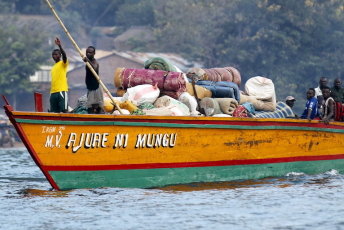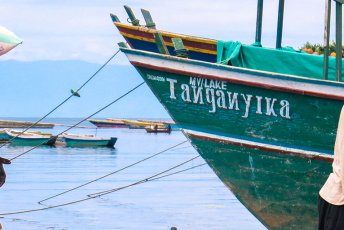|
©Institute for Security Studies |
When asked about his favourite pangolin story, Francois Meyer, a pangolin release specialist, tells the story of Ally. After being rescued from the illegal trade, Ally – an expectant female Temminck’s ground pangolin – was reintroduced into the wild and gave birth to her pup, Pod.
The next year she had her second pup, Ray, named after pangolin expert Professor Ray Jansen, from the Tshwane University of Technology and International Union for Conservation of Nature Species Survival Commission Pangolin Specialist Group.
Success stories like Ally’s are the culmination of efforts aimed at ensuring the survival of pangolins rescued from the illegal trade and bringing perpetrators to book.
Temminck’s ground pangolin, South Africa’s only indigenous pangolin species, is globally classified as vulnerable to extinction. These gentle, elusive creatures are hard to study, but research indicates that their numbers are declining, primarily due to international illegal trade. They are also threatened by habitat destruction and electric fences.
Source: IUCN Red List
Pangolins have historically served as bushmeat in some African countries, with limited use of their scales for traditional cultural practices. Jansen says the cultural use of pangolins in South Africa is considered sustainable. The existential threat instead stems from the global illegal trade supplying Asian demand for pangolin scales used in traditional Chinese medicine.
International trade in pangolins and their derivatives, like scales, is globally prohibited. Pangolins are protected under South African law, which prohibits hunting, catching, transporting, selling, buying, importing, exporting and being in possession of one without a permit. Any domestic trade, import or export of pangolins or their body parts is illegal in South Africa.
However, prohibition has done little to mitigate the illegal trade globally. Unsustainable consumption of Asian pangolin species likely resulted in the increased sourcing of African pangolins. Most shipments seized in Asia originate from Africa – particularly Central and Western Africa. After being killed, pangolins are stripped of their scales, which are consolidated and shipped primarily from Nigerian ports, mostly destined for China and Vietnam. Seizures containing whole pangolins from Africa are rare, even though their meat is considered a delicacy in Asia.
South Africa is however an outlier to this global trade due to limited pangolin seizures. Jansen told ENACT that from January to August 2023, around 30 pangolins had been seized in South Africa – on par with previous years’ seizure numbers.
Most South African seizures are of live pangolins and result from sting operations orchestrated by a task team comprising different law enforcement entities, often based on information received from the public. Limited seizures are also made during random searches, such as at roadblocks. Most are made in Limpopo province, where pangolins are often sourced; but they are also brought across the border from countries like Mozambique, Botswana and Zimbabwe.
Jansen says the motivation for this cross-border movement could be to escape strictly imposed penalties in neighbouring countries, or due to the perception that buyers are more likely to be found in South Africa. This is why many seizures have also been made in economic hubs like Gauteng.
Most resulting arrests are of groups of individuals, often including foreign nationals from countries like Zimbabwe and Mozambique.
Although these seizures are isolated incidents and incomparable to the multi-tonne seizures of containerised pangolin scales from Central and West Africa, experts say changing trends in South Africa may be cause for concern.
Jansen and Meyer agree that people offering pangolins for sale were initially opportunists, such as impoverished community members trying to make fast money. Now, however, suspects are increasingly well-to-do individuals who own businesses and vehicles, and trade in other illegal commodities. Police and government officials have also been arrested. Another emerging trend is the increased seizure of pangolins and skins from the Northern Cape province and Namibia.
Rescuing pangolins from traffickers is only the first step in a series of efforts to care for seized pangolins and to get them back into the wild. Pangolins are sensitive to stress during capture and trafficking. Their trauma doesn’t stop after being rescued from the illegal trade, and they often suffer psychological effects and illnesses far worse than physical injuries.
After being seized by law enforcement, non-governmental organisations typically take over their care. Pangolins receive veterinary care and those that survive are rehabilitated. They then enter a period of facilitated, monitored release until they are completely rewilded.
Meyer says through trial and error, a group of passionate pangolin rescuers have developed best practices to get pangolins from the trade back into the veld. They have trained counterparts, resulting in multiple institutions being able to care for rescued pangolins.
Since awareness of this illegal trade has grown, heavier sentences have been handed down, although some presiding officers still impose lenient sentences. It is a hard balance to strike when the socio-economic conditions of the accused are weighed against their crime.
Current seizures are limited and remain stable, but this was once the case for rhinos before illegal harvesting rapidly escalated. While most law enforcement efforts have focused on seizing individual pangolins, it is possible that pangolins are also sourced from, or shipped from, South Africa on a larger scale, but have remained undetected.
South Africa already serves as an exit point for large shipments of multiple wildlife commodities such as ivory and abalone. But, as is typical of organised crime investigations, Jansen notes the difficulty in infiltrating the criminal networks responsible for large export operations.
If the trade is indeed becoming more organised, with professionals and government officials involved, it opens the door for corruption in the same way that the trade in rhino horn and abalone has. It could grow in magnitude and become entrenched in South Africa. Since the global illegal trade shows no indication of slowing down, South Africa should anticipate that pangolins will be sought wherever they are found and be prepared to prevent this.
Meyer and Jansen both highlight the urgency of teaching people about unique species like pangolins, keeping them alive in popular culture so that South Africa does not sell its unique and shared natural resources to other countries before realising what has been lost.
There are effective informal working relationships between the different entities addressing the illegal trade and care for pangolins. However, South Africa’s response to their trafficking could benefit further from a strategy similar to the National Response Strategy to combat the booming illegal succulent trade. This would coordinate state and non-state actors’ activities and address the pangolin trade, and its causes and effects, holistically.
Dr Carina Bruwer, Senior Researcher, ENACT








